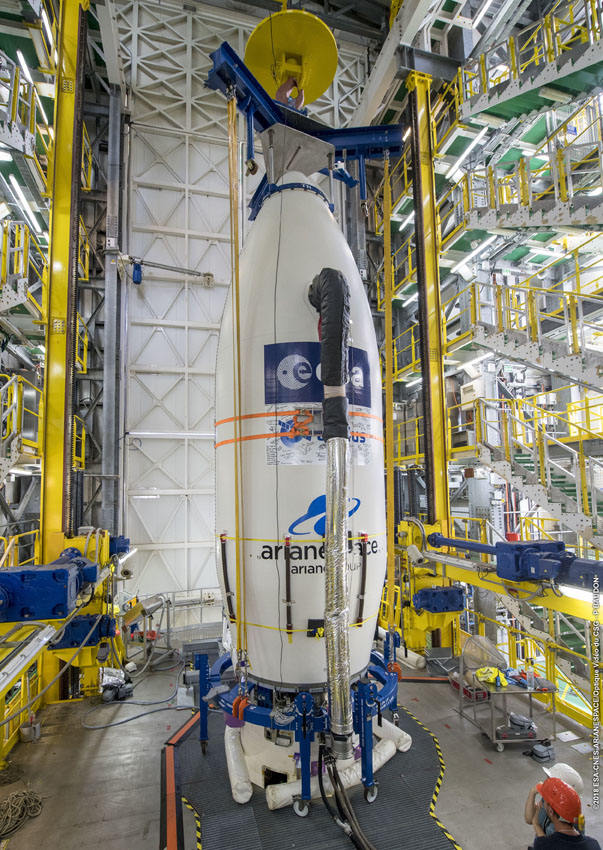In its first mission of the year, Arianespace's light-lift Vega launcher is scheduled to orbit the Aeolus wind-sensing satellite on 21st August.
Aeolus, the European Space Agency’s wind sensing satellite, is is set for liftoff on Arianespace's Vega light-lift launcher on 21st August.
It will be the first mission of the year for Vega and its 12th flight overall. It will be the fifth launch this year from the Guiana Space Centre (CSG).
The latest of ESA’s Earth-observation satellites, Aeolus will weigh 1.35 tonnes at lift-off and has an expected service life of three years. It is the first satellite capable of observing winds using laser technology to generate dynamic 3D maps of surface winds around the globe.
The spacecraft, primed by Airbus, features a LIDAR (LIght Detection And Ranging) instrument called Aladin, which uses the Doppler effect to determine the wind speed at varying altitudes.
Aeolus is expected to provide reliable wind-profile data on a global scale. The data is needed by meteorologists to further improve the accuracy of weather forecasts and by climatologists to better understand the global dynamics of Earth’s atmosphere.
Aeolus will orbit the Earth 15 times a day with data delivery to users within 120 minutes of the oldest measurement in each orbit. The orbit repeat cycle is 7 days (every 111 orbits) and the spacecraft will fly in a 320km orbit for three years.

